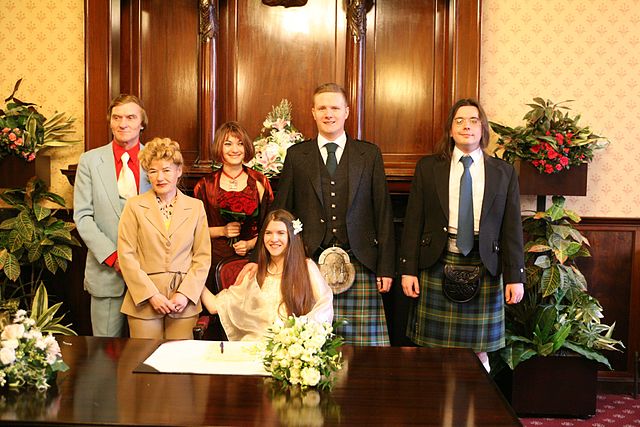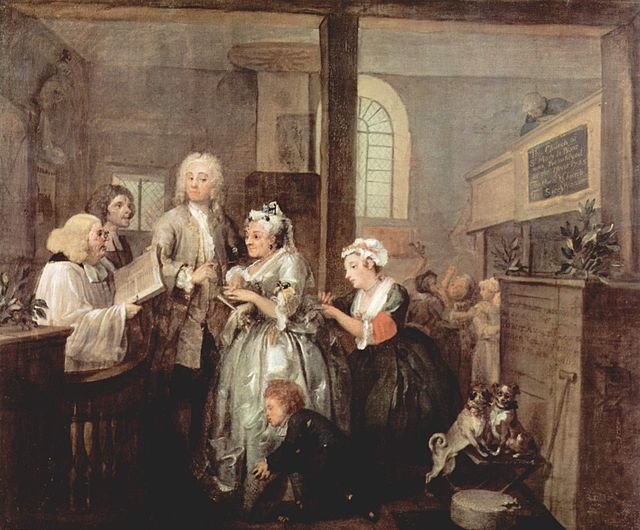Marriage in Scotland is recognised in the form of both civil and religious unions between individuals. Historically, the law of marriage has developed differently in Scotland to other jurisdictions in the United Kingdom as a consequence of the differences in Scots law and role of the separate established Church of Scotland. These differences led to a tradition of couples from England and Wales eloping to Scotland, most famously to marry at border towns such as Gretna Green. The legal minimum age to enter into a marriage in Scotland is sixteen years and does not require parental consent at any age.
A Scottish wedding party. Both groom and best man wear kilts.
David Allan's painting of Highland wedding from 1780
19th-century painting of a "penny wedding", one at which the guests contributed money to pay for the cost of the ceremony and to benefit the couple
Marriage and Toll House at Coldstream Bridge, on the Scottish side; the river forms the border with England at this point
Marriage in England and Wales
Marriage is available in England and Wales to both opposite-sex and same-sex couples and is legally recognised in the forms of both civil and religious marriage. Marriage laws have historically evolved separately from marriage laws in other jurisdictions in the United Kingdom. There is a distinction between religious marriages, conducted by an authorised religious celebrant, and civil marriages, conducted by a state registrar. The legal minimum age to enter into a marriage in England and Wales is 18 since 27 February 2023. Previously the minimum age of marriage was 16, with parental permission. This also applies to civil partnerships.
Lining up for a traditional wedding photograph
An idealised medieval wedding imagined by Edmund Leighton (Call to Arms 1888)
Caricature of a clandestine Fleet Marriage, taking place in England before the Marriage Act 1753
William Hogarth's A Rake's Progress depicting a wedding in the 18th century








